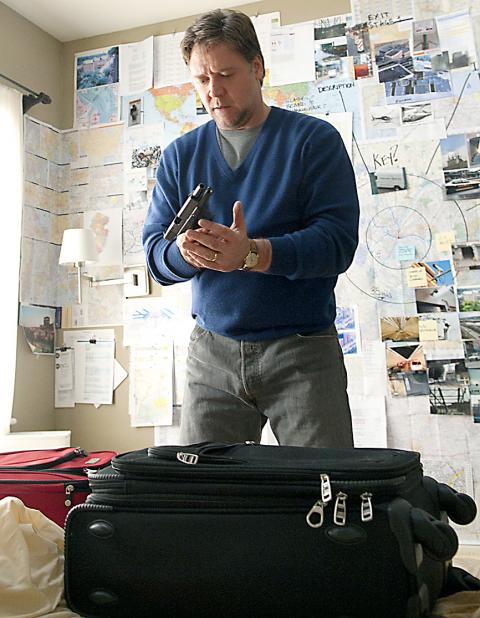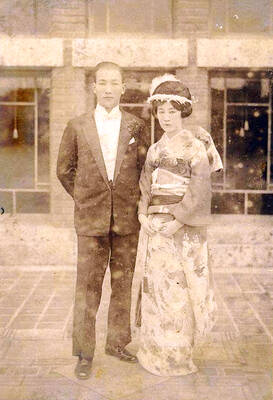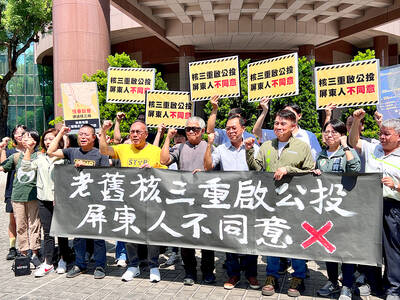One of the strictures of the old Motion Picture Production Code was that “methods of crime should not be explicitly presented” and that in particular, “theft, robbery, safe-cracking, and dynamiting of trains, mines, buildings, etc., should not be detailed in method.” The censors of the Hays Office did not want motion pictures to become teaching materials for criminals. The Next Three Days, a new thriller written and directed by Paul Haggis, is in many respects an old-fashioned movie but also amounts to a kind of cinematic “Illegal Activity for Dummies.”
Or maybe a violent, feature-length version of one of those once-hot cable television makeover shows. Here, a regular guy named John (Russell Crowe) is transformed into a scheming mastermind, planning and executing not a simple safe-cracking but rather a daring and logistically complex jailbreak. He doesn’t acquire the requisite skills by watching movies, though. That’s what the Internet is for. This unassuming Pittsburgh dad — he makes his living mumbling about Don Quixote to students at a local community college — combs YouTube for videos showing how to forge skeleton keys and break into cars with a tennis ball. On Amazon, he tracks down the memoir of a man who broke out of seven prisons, then goes to interview the guy, played by Liam Neeson with a dodgy Brooklyn accent, a decorative scar and a thousand-yard stare.
John’s actions, which bring him into contact with all kinds of nasty characters (including drug dealers played by RZA and Kevin Corrigan) and eventually arouse the suspicions of the police (mainly Aisha Hinds, Jason Beghe and Allan Steele), are certainly not what you would expect of a college instructor played by anyone other than Crowe. Our man’s motives, however, could hardly be more noble. One fine morning, John’s wife, Lara (Elizabeth Banks), is snatched up by the cops and hauled off to jail, charged with murdering the boss she had argued with the night before.

Photo: BLOOMBERG
Three years pass quickly (in about 15 minutes of screen time), and by the time his wife’s last appeal has been denied, John, certain of her innocence, finds himself driven to an extreme and elaborate display of spousal loyalty. He takes pictures, draws maps, buys a gun and some false passports, and plans a one-man assault on the Allegheny County Jail. Their young son, Luke (Ty Simpkins), wonders what Dad is up to, but he never raises a fuss. John’s parents (Helen Carey and Brian Dennehy) accept spontaneous baby-sitting assignments without complaint.
In his quiet, brooding roles (of which this is surely one), Crowe carries the possibility of violence coiled within him, and one of the problems with The Next Three Days is that John’s menace and desperation are visible from the start, so that the occasional displays of uncertainty and anxiety are not quite convincing. Nor, when you stop to think about it, is most of the rest of the movie, which remakes a 2008 French movie called Pour Elle. I don’t mean that the story is implausible — if I were a professor in Pittsburgh with a diabetic wife in the hoosegow, I would certainly figure out how to falsify her medical records — but rather that all the emphasis on technique starves the drama of psychological intensity.
What about Lara? The structure of the film, which skips over the details of the trial and flashes back teasingly to the crime itself, allows for some ambiguity about her guilt. But Banks is never given enough time on-screen to complete the portrait that might make this uncertainty mean something. Is this woman capable of bludgeoning someone to death with a fire extinguisher? The court says yes, her husband says no, but Haggis does not let us see the shadows of her personality that would make this argument interesting.
Nor does he exploit the absurdist, almost comic themes that are latent in the film’s premise. An intellectual with a closet full of corduroy jackets and a Prius is transformed by Kafkaesque circumstances into an outlaw — there is all kinds of potential here, but Haggis lacks the Hitchcockian sense of mischief to make it blossom. His work as a director (Crash, In the Valley of Elah) and as a screenwriter (Million Dollar Baby) has never been distinguished by humor, and that, somewhat paradoxically, is what a movie like The Next Three Days needs if it is to be taken seriously. Otherwise it’s not much more than a meticulously detailed, very long instructional video.

Under pressure, President William Lai (賴清德) has enacted his first cabinet reshuffle. Whether it will be enough to staunch the bleeding remains to be seen. Cabinet members in the Executive Yuan almost always end up as sacrificial lambs, especially those appointed early in a president’s term. When presidents are under pressure, the cabinet is reshuffled. This is not unique to any party or president; this is the custom. This is the case in many democracies, especially parliamentary ones. In Taiwan, constitutionally the president presides over the heads of the five branches of government, each of which is confusingly translated as “president”

Sept. 1 to Sept. 7 In 1899, Kozaburo Hirai became the first documented Japanese to wed a Taiwanese under colonial rule. The soldier was partly motivated by the government’s policy of assimilating the Taiwanese population through intermarriage. While his friends and family disapproved and even mocked him, the marriage endured. By 1930, when his story appeared in Tales of Virtuous Deeds in Taiwan, Hirai had settled in his wife’s rural Changhua hometown, farming the land and integrating into local society. Similarly, Aiko Fujii, who married into the prominent Wufeng Lin Family (霧峰林家) in 1927, quickly learned Hoklo (commonly known as Taiwanese) and

The low voter turnout for the referendum on Aug. 23 shows that many Taiwanese are apathetic about nuclear energy, but there are long-term energy stakes involved that the public needs to grasp Taiwan faces an energy trilemma: soaring AI-driven demand, pressure to cut carbon and reliance on fragile fuel imports. But the nuclear referendum on Aug. 23 showed how little this registered with voters, many of whom neither see the long game nor grasp the stakes. Volunteer referendum worker Vivian Chen (陳薇安) put it bluntly: “I’ve seen many people asking what they’re voting for when they arrive to vote. They cast their vote without even doing any research.” Imagine Taiwanese voters invited to a poker table. The bet looked simple — yes or no — yet most never showed. More than two-thirds of those

In the run-up to the referendum on re-opening Pingtung County’s Ma-anshan Nuclear Power Plant last month, the media inundated us with explainers. A favorite factoid of the international media, endlessly recycled, was that Taiwan has no energy reserves for a blockade, thus necessitating re-opening the nuclear plants. As presented by the Chinese-language CommonWealth Magazine, it runs: “According to the US Department of Commerce International Trade Administration, 97.73 percent of Taiwan’s energy is imported, and estimates are that Taiwan has only 11 days of reserves available in the event of a blockade.” This factoid is not an outright lie — that